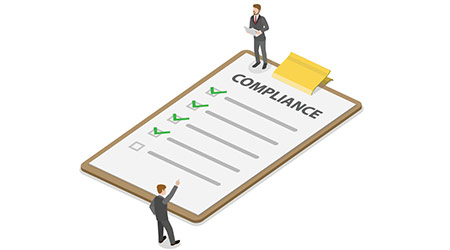
The most important takeaway after all these rules is that handwashing is as important as ever before, and the choices for products to use in facility hand hygiene programs — whether that be traditional hand soap, antibacterial hand soap or hand sanitizer — will remain the same for now. In fact, whether facility cleaning managers choose to provide antibacterial hand soap or regular hand soap is a decision they can make based on the specific needs of the facility.
Sansoni suggests managers consider the fact that "antibacterial hand soaps have that extra ingredient with the specific purpose of killing those germs that can make us sick on the skin." However, the U.S. Centers for Disease Control and Prevention (CDC) does not see an added health benefit for the use of antibacterial hand soaps over traditional soap. "To date, studies have shown that there is no added health benefit for consumers using soaps containing antibacterial ingredients compared with using plain soap (this does not include professionals in the healthcare setting)," says Brittany Behm, MPH, health communication specialist in the CDC's Division of Foodborne, Waterborne, and Environmental Diseases.
No matter which soap option facility cleaning managers choose for their hand hygiene program, the point is to provide the appropriate tools building occupants need to wash up. Washing with soap and water defends against infections, prevents cross-contamination and keeps facilities cleaner.
Following CDC guidelines, hand sanitizers can be used to enhance a program that focuses on soap and water handwashing, but should not be used as a replacement. According to the CDC, washing with soap and water is the best way to reduce the number of microbes on hands. It is also more effective than hand sanitizers at removing or inactivating certain kinds of germs, such as norovirus and C. difficile.
If soap and water are not available, only then is it recommended to use an alcohol-based hand sanitizer that contains at least 60 percent alcohol. This is because, according to the CDC, hand sanitizers may not be as effective when hands are visibly soiled or greasy.
Tips For Handwashing Programs
Handwashing is a facility's first and most important line of defense against the spread of infection. While, as of right now, facility cleaning managers will not have to worry about any change to the products that are available for use in their handwashing programs, managers will want to continue to highlight the importance of hand hygiene to prevent the spread of infection.
"Signs that encourage everyone in your building to wash their hands or use hand sanitizers shows your building occupants you care about their health and well-being," says Sansoni. "These signs also provide a constant reminder at key areas, like near sinks or hand sanitizer dispensers, to reinforce the importance of healthy hands."
Implementing a handwashing signage system doesn't require any financial investment. The CDC has many versions of printable handwashing signs available on the handwashing section of its website. These may also be ordered from the CDC for free.
Cleaning managers can also ask their soap manufacturers and distributors to help provide their departments with signage to accompany their soap and sanitizer dispensers. Think strategically about the most important areas in the building where handwashing signage will have the greatest effect.
Signs will help reinforce handwashing initiatives, but users also consider other elements before complying. The soap products supplied by facilities, for example, will be scrutinized by building occupants. Thankfully, at least for the time being, managers won't have to weed through the legislative minutiae to find desirable products.
Rulings from the FDA have taken certain active ingredients out of some antibacterial hand soaps and have forced the cleaning industry to prove the efficacy and safety of other active ingredients. Manufacturers are already working closely with organizations like ACI to be aware of regulatory changes and are adjusting their product formulations in anticipation of these rules. This means purchasers in 2019 can expect that the same products will be available for the foreseeable future.
As the FDA continues to investigate these active ingredients, cleaning programs can reinforce proper handwashing techniques, awareness and strategy to bolster infection prevention efforts.
Nicole Bowman is a freelancer based in Sinking Spring, Pennsylvania.
Updates On FDA Rulings Of Soap And Sanitizers

 Celebrating BSCAI's 60th Anniversary eBook
Celebrating BSCAI's 60th Anniversary eBook The Down and Dirty on Cleaning in Virus Season
The Down and Dirty on Cleaning in Virus Season How Surfactant Use is Expanding in Commercial Cleaning
How Surfactant Use is Expanding in Commercial Cleaning